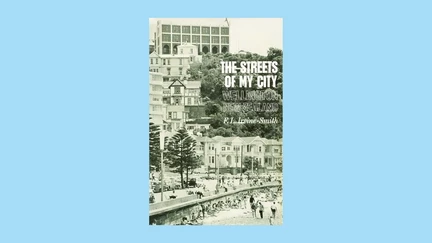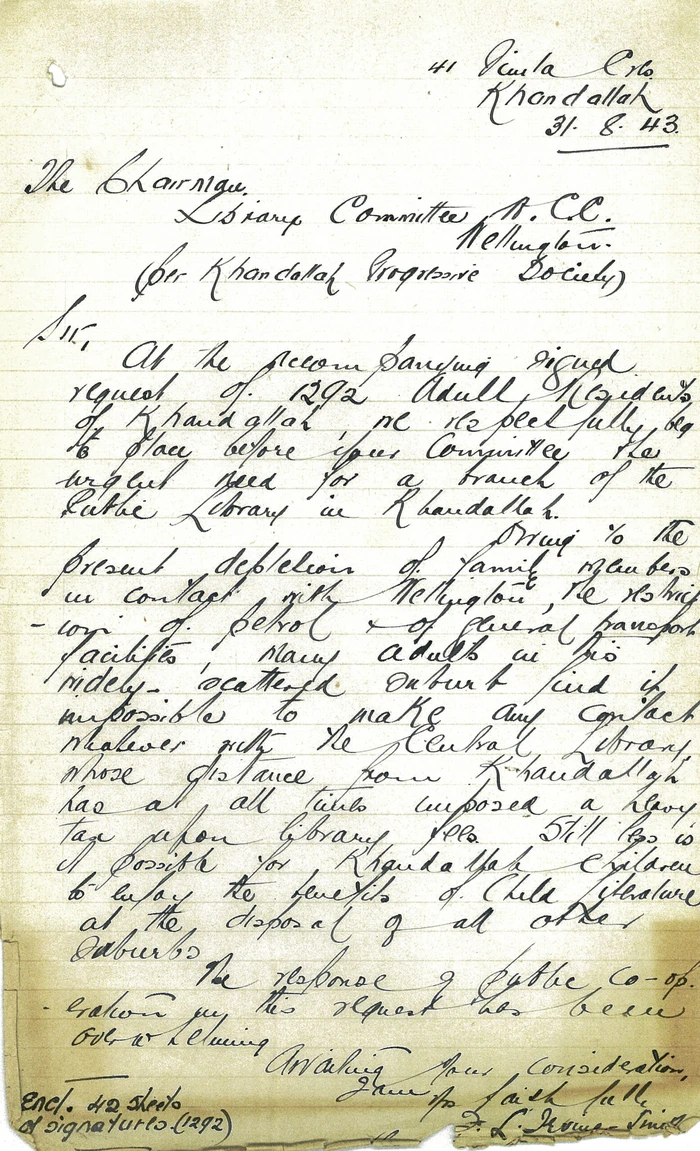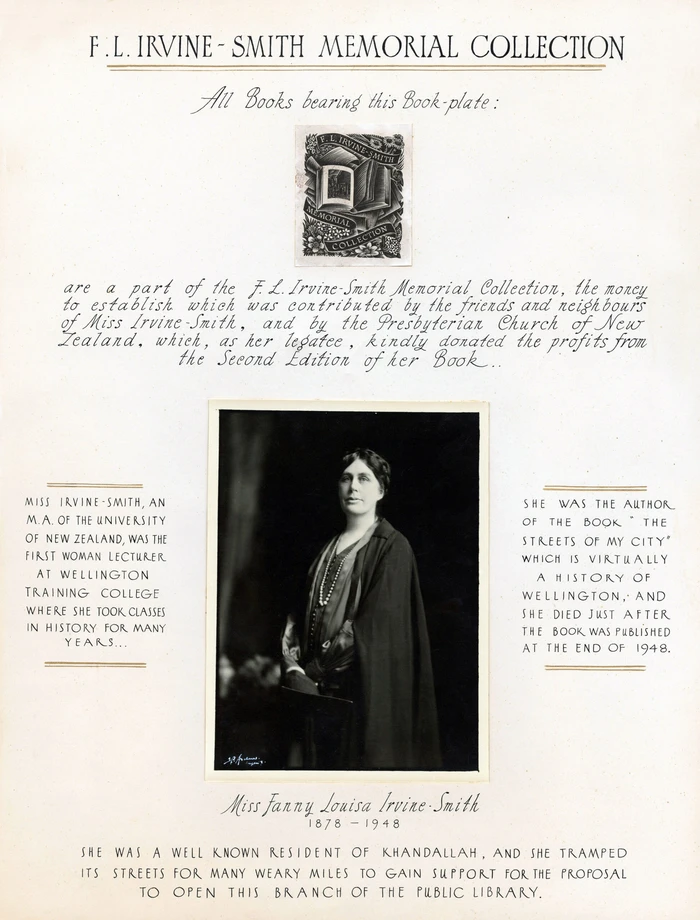‘The Streets of My City’: the Legacy of Fanny Irvine-Smith
Previously only available in an online text form, one of the most useful and readable books about Wellington’s local history is now fully digitised on Wellington City Recollect.

The Streets of my City broke new ground when it was first published in 1948, presenting Wellington’s past through a tour of its streets and how they had been named. It was a radical departure from previous dry and somewhat pedestrian works of local history such as Alan Mulgan’s The City of the Strait (1939) and Louis Ward’s Early Wellington (1929). It was the culmination of years of work by one of Wellington’s most remarkable women from the first half of the 20th Century, F. L. (Fanny Louise) Irvine-Smith.
She was born in Napier on 10 September 1878 but her father died in an accident when she was only six-months old and the family moved to Wellington after her mother remarried. She attended Wellington Girls’ College from 1892 to 1895, then attended teachers’ college which began her life-long professional involvement in education. Her first teaching position was as a young intern at Fitzherbert Terrace School in Thorndon in 1897 (eventually to become Samuel Marsden Collegiate) when she was aged only 19 and she soon accepted a number of placements around the North Island. As she never married, Irvine-Smith was free of the social norms of the period that expected women to give up their careers upon marriage. She completed her teaching qualifications in New Plymouth in 1898, then returned to Wellington and enrolled at Victoria College (now Victoria University) where she studied part-time while continuing to teach, graduating with a B.A. in 1908. While there she also became the founding editor of the university review magazine, Spike which remained in publication for 60 years. She returned to the institution in 1920 where she completed a M.A in history; a rare achievement for women in this period.

The covering letter of the petition organised by Irvine-Smith in 1943 which lobbied the City Council for a library in Khandallah.
She eventually took up a post at the Wellington Teachers’ Training College where she lectured in what were then two rarely taught and often dismissed subjects; New Zealand history and Māori culture. Her efforts in this field made her one of the pioneers in bridging the cultural gap between Māori and Pakeha and her lessons went on to have a significant influence on the teaching of Māoritanga to thousands of children throughout the country for decades. Residing in the family home in Khandallah where she had grown up, she became active in the local residents’ association and began lobbying the WCC for the suburb to have its own library, reflecting her strong belief in the important role that libraries have in educating young and old alike. She began a petition, personally knocking on every door in Khandallah and she eventually gathered 1292 signatures; a sizable proportion of the suburb’s population at the time. She continued her strong interest in drama which was kindled during her university years, acting and directing plays as well as writing reviews for various publications. It was around this time that she began work on what was eventually to become The Streets of My City, keeping in contact and discussing her research with other Wellington-based historians through informal forums held at the Alexander Turnbull Library.

This memorial scroll hangs in the Khandallah Library in recognition of the role of Irvine-Smith in its establishment
However, she began to suffer poor health during this period. One month after her book was published to excellent reviews she was admitted to a private hospital for surgery. She never recovered from the operation and passed away on 20 December 1948. Her book went on to become a best-seller and was re-printed the following year with all royalties going towards a fund to purchase books for the Khandallah Library. The memorial collection named in her honour was presented in a ceremony held at a temporary library on 8 December 1951 (this building remains today as the Khandallah Plunket rooms). It was to be nearly five years after her death that the branch library she so vigorously lobbied for finally opened in a purpose-built facility in Ganges Road where it continues to operate to this day.